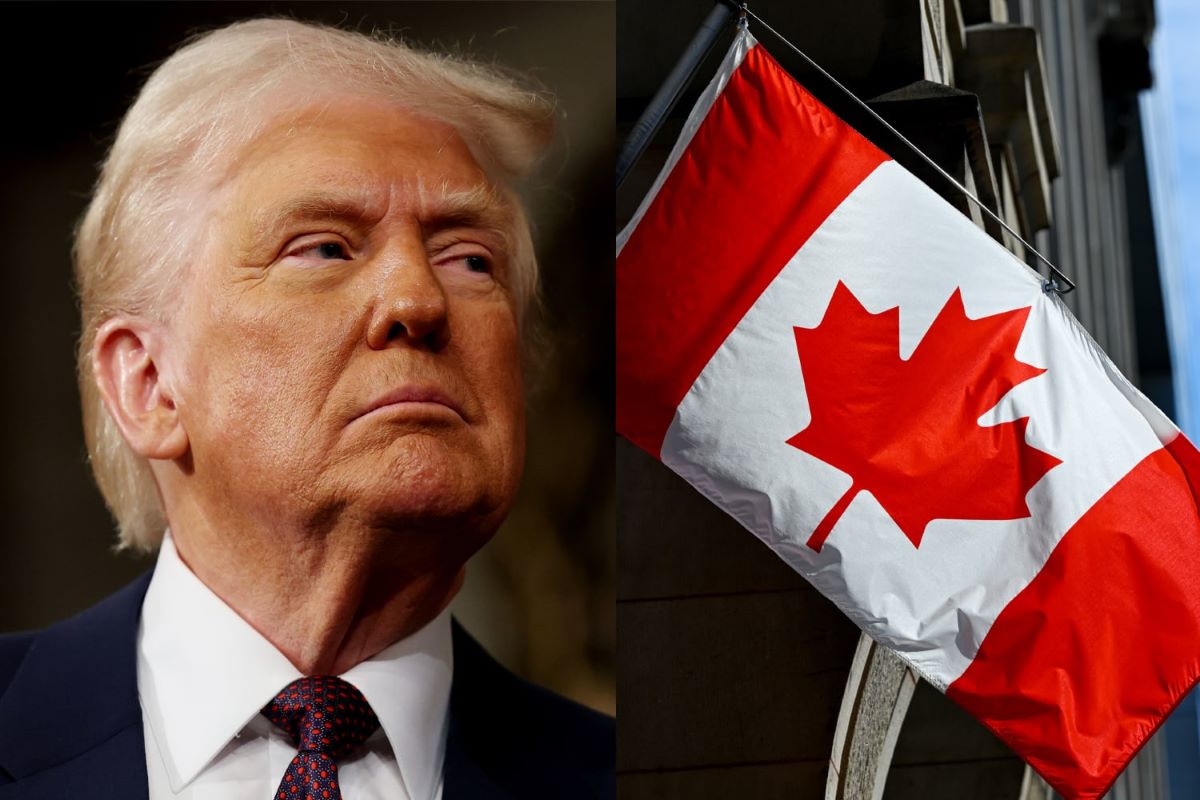Trump Threatens 35% Tariff on Canadian Products Starting August, and Double Tariffs for Countries Yet to Receive Trade Letter
U.S. President Donald Trump has escalated his trade offensive against Canada, announcing a 35% tariff on Canadian imports set to take effect on August 1. The move marks a sharp increase from the curre

U.S. President Donald Trump has escalated his trade offensive against Canada, announcing a 35% tariff on Canadian imports set to take effect on August 1. The move marks a sharp increase from the current 25% rate and comes amid heightened tensions over trade imbalances, non-tariff barriers, and fentanyl-related concerns.
In a letter addressed to Canadian Prime Minister Mark Carney and posted on Trump’s social media platform, the president warned that the tariff could increase further if Canada retaliates. Trump also suggested that goods transshipped to evade the new tariffs would be subject to the same elevated rate.
"If Canada works with me to stop the flow of fentanyl, we will, perhaps, consider an adjustment to this letter," Trump wrote, reiterating his long-standing claim that fentanyl entering the U.S. partly originates from Canada. Canadian officials have pushed back, saying only a minuscule amount comes from their country, but pledged to continue strengthening border enforcement.
In response, Carney stated on X that “Canada has made vital progress to stop the scourge of fentanyl in North America. We are committed to continuing to work with the United States to save lives and protect communities in both our countries.” He added that Canada "has steadfastly defended our workers and businesses" and remains committed to negotiating with the U.S. before the August 1 deadline.
The newly announced 35% tariff will apply broadly and separately from existing sector-specific tariffs. Canada already faces a 50% tariff on copper beginning in August, along with previous Trump-era levies of 50% on steel, 25% on autos, and 10% on energy and fertilizer. While goods covered under the United States-Mexico-Canada Agreement (USMCA) are expected to remain exempt, Trump has not ruled out future adjustments.
The tariff threat also coincides with broader moves by Trump to rework America’s global trade relationships. The President also indicated that countries not yet engaged in trade talks or that have not received formal tariff letters would face blanket duties of 15% or 20%—doubling the current 10% baseline rate.
“We're just going to say all of the remaining countries are going to pay, whether it's 20% or 15%. We'll work that out now,” Trump told NBC News.
So far, Trump has sent nearly two dozen tariff letters to world leaders and has concluded or initiated trade deals with China, the UK, Vietnam, and potentially India. Negotiations with the EU and Taiwan, however, remain ongoing, with uncertainty around whether these partners will also face the new blanket tariffs.
Canada is the United States' largest trading partner, importing $349 billion worth of American goods last year. Total bilateral trade reached $761.8 billion in 2024, but the U.S. registered a $62 billion goods trade deficit. In just the first five months of 2025, that deficit has already grown nearly 10% year-over-year, hitting $25.6 billion.
Tensions flared earlier this year when Canada imposed 25% counter-tariffs on U.S. exports not covered under USMCA, including steel, aluminum, electronics, apparel, and food, in retaliation for Trump’s tariffs. Ottawa stated those measures will remain in place until U.S. duties are lifted.
Adding to the friction, Trump has also criticized Canada’s "digital services tax" targeting American firms, though Ottawa withdrew the policy to reopen trade talks, which were agreed to resume in late June with a target date of July 21 for a potential deal.
With the August 1 deadline fast approaching, many countries are under pressure to strike an agreement or risk an all-out trade war.
Disclaimer: The views in this article are from the original Creator and do not represent the views or position of Hawk Insight. The content of the article is for reference, communication and learning only, and does not constitute investment advice. If it involves copyright issues, please contact us for deletion.